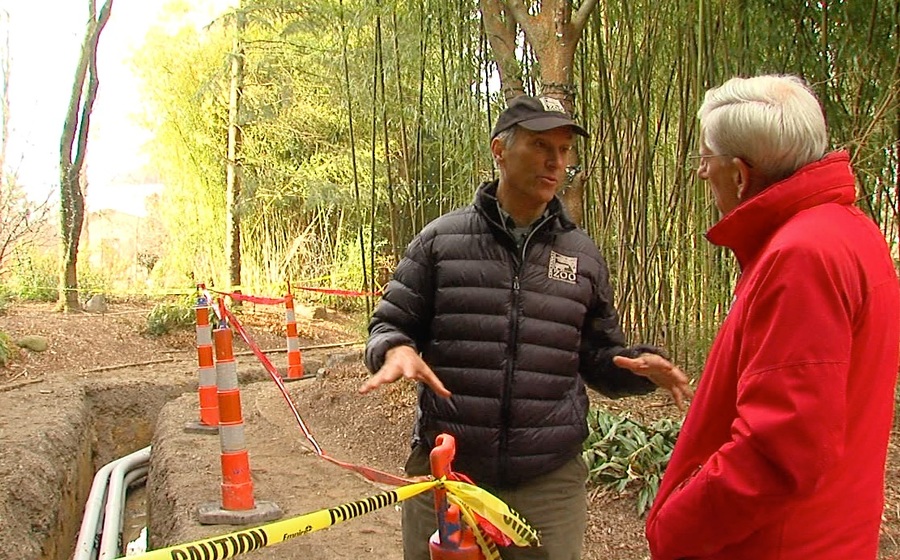CINCINNATI -- At the Cincinnati Zoo and Botanical Garden, the polar bears' pool has to be kept at 65 degrees.
The zoo used to just pump in tap water; back then, the standard allowable temperature was 75 degrees, but rules changed. That meant the zoo had to install chillers to cool the water; now it's pumped to the penguins, puffins and sea lions, too.
"It's worth doing because polar bears are an endangered species," zoo director Thane Maynard said. "They have very specific requirements. It's the zoo's responsibility to give our animals the very best care."
That rule change cost $600,000 within the past five years, and the zoo's ready to put another $400,000 into the chilling and pumping system. It's an example of the hidden costs most visitors never see, but have a big impact on the animals under the zoo's care.
Hamilton County's Board of Commissioners will decide Wednesday whether to put a levy renewal on the May ballot. More important to the zoo is whether that will include an increase for inflation, pennies a day for most property owners that can have a major impact on the zoo's ability to operate.
Just feeding the animals costs about $1 million a year. The elephants each eat 70 to 75 pounds of hay per day -- "somewhere between 10,000 and 12,000 bales a year," according to Barbara Henry, the zoo's curator of nutrition.
Meat for lions, tigers and other carnivores has gone up steadily since 2010, going from about $74,000 a year to $200,000.
When animals get sick, most cases are handled at the zoo's hospital. But as they age, it costs more for medicine, hospital supplies and diagnostic testing. According to Mark Campbell, director of animal health, those costs have increased 5 to 10 percent over the past 10 years.
"That's across the board," Campbell said. "I think people understand that."
Property owners have helped support the zoo for 35 years. At one point, the levy provided 41 percent of the zoo's budget; now it's down to 17 percent.
"We actually receive 10 percent less today than we did in 2008, but our expenses for the basic zoo needs of animal care, plant care and maintenance have gone up 54 percent," Maynard said.

Thane Maynard, director of the Cincinnati Zoo and Botanical Garden, explains a major electrical system project underway.
Hamilton County's Tax Levy Review Committee has already made a recommendation to commissioners: Put the levy on the May 8 ballot without an increase. But committee members also told commissioners to put the inflationary increase back if at all possible.
The zoo levy costs $10 a year for the owner of a $100,000 house. If the inflationary increase is added back in, Maynard said it would go to $13.50 a year.
"So, it's less than a penny a day that we're asking for as an increase -- less than 30 cents a month," Maynard said.
That's money Maynard said would help maintain a large facility with 80 buildings, 40 percent of which are more than 75 years old.
The zoo spends about $5 million a year on maintenance. Right now, work's underway to repair underground electrical lines -- completed in the slow season so it doesn't disrupt guests' visits.
"That's $2.5 million that we're spending this winter that nobody will ever see," Maynard said.
The Reptile House roof was just replaced for $1.5 million. The Elephant House needs a new roof, which will cost $2 million.
If county commissioners opt to not put any levy on the May at all, discussions would begin about making the November ballot.
The zoo attracted 1.9 million visitors last year, many of them to see Fiona. Maynard argues the zoo remains a bargain, and the extra dollars are needed to keep it that way.
"We're the little zoo that could right here on the corner of Vine and Erkenbrecker," he said.


